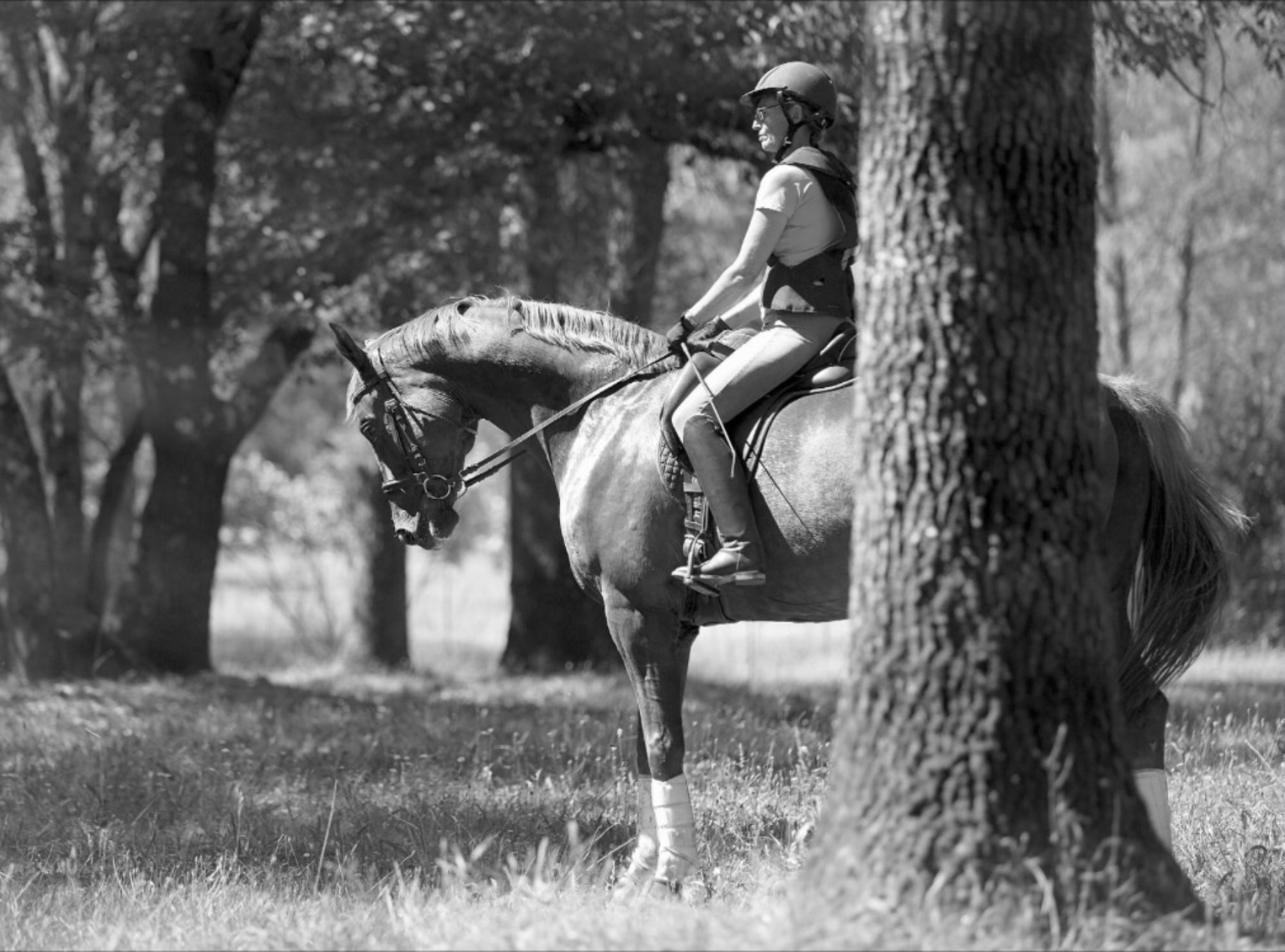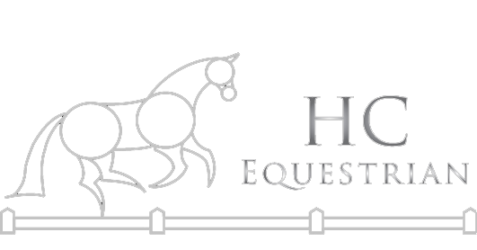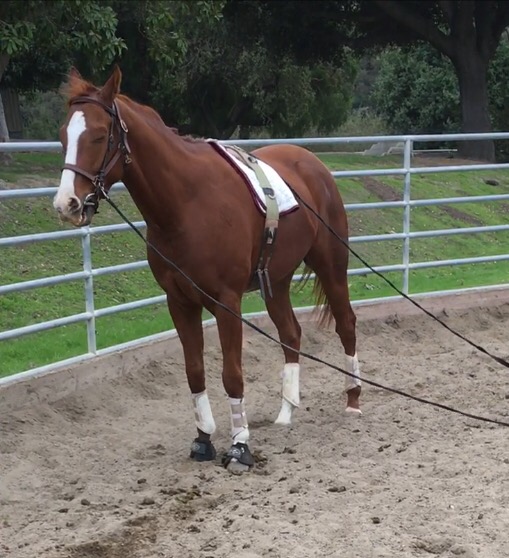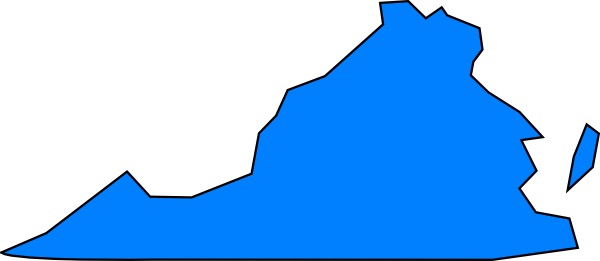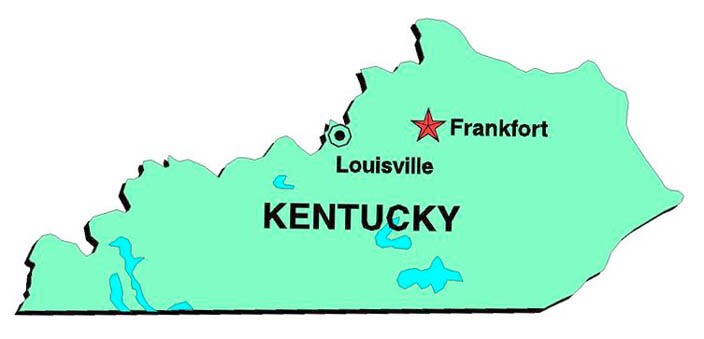Blue and Corny are the thoroughbreds I hope to take to Kentucky in October for the thoroughbred makeover competition. Niether of these full brothers longed very well, so my last entry was about how I taught them direction and speed cues while they were loose. Now it’s time to put the lines back on and try longing again.
Both horses might have had a little bit of Parelli training at their previous farm. My guess is that this is why they turn in to face me as soon as they feel the slightest pressure on the longe line. Usually when a horse does this, I hurry to get behind them to send them forward again in the same direction. I tried that first with these two, but that seemed to confuse them more and make them a bit frantic. That certainly isn’t going to help me. Being frantic is not a mindset that fosters learning, so I’ve got to figure out how to explain things more clearly to the brothers.
Enter the double longe! Sometimes called long lining, it’s a way to have influence on both sides of the horse independently. I am fairly it experienced with double longing, but it’s best to learn on horses that already longe pretty well.
My set up is:
- A surcingle
- A folded saddle pad
- A halter
- A slip (a snaffle bridle without a noseband or reins)
- Long lines
 Corny ready to learn double longing
Corny ready to learn double longing
In an ideal world my surcingle would have turrets, but I get by without.
Unlike longe lines, long lines are rolled, for the first few meters. The first couple years that I did double longing, I preferred to use two different colored longe lines.
I have already gotten the horses used to ropes moving around all their legs and tail. I also introduced their boots previous to this session.
Week 2, day 1
I worked both horses in the roundoen wearing all the equipment, but not hooked up to the long lines. I noticed that Corny has a real problem with holding the bit in his mouth and keeping his tongue steady. I’m not going to attach lines or reins to his bit until he learns to hold the bit calmly and quietly.
After a quick review of speed and direction cues, I attached the long lines. The line closer to me clipped directly onto the side of the halter, or inside bit ring. The line on the opposite side ran over the horses back, through the top surcingle ring, and then to the bit. Now I could influence the horse to turn to the outside, while they could still see the inner line run from their face to my leading hand.
Here’s some footage of Corny’s first session on the long lines.
Week 2, days 2-3
Long lining went well in the round pen yesterday, now it’s time to try in the arena. I was able to keep the horses moving forward by using my outside rein to keep them from turning in or cutting in. I could also use my outside rein to keep them from drifting out to some extent.
However, both brothers are pretty convinced that the”circle” I want them to do looks like this:
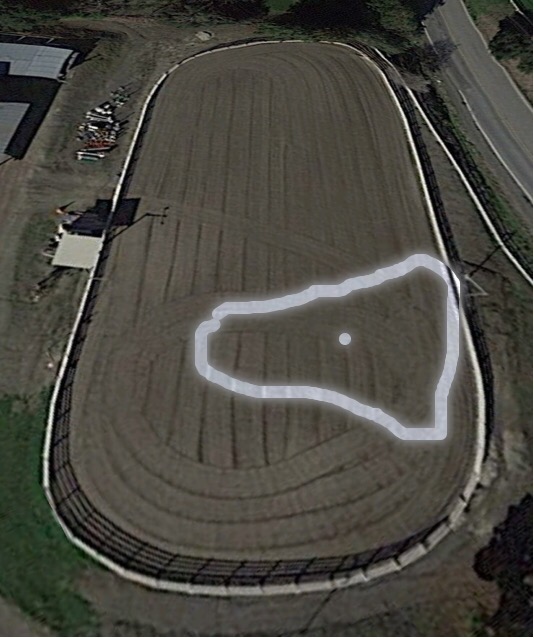 Corny and Blue’s idea of a longing circle
Corny and Blue’s idea of a longing circle
They are super consistent about making this god awful shape! It’s the same in both arenas, and flips over when we change direction.
Seriously, what is that? Are they football fans?
Virginia
Oh, I get it! They are trying to tell me they want to go to
To see Corny’s interpretation of the circle, check out his first day on the double longe:
This clip shows the 3/4 circle where he turns to face me when he hits the inside rein. This happened pretty much every time before we started the double longe. It also shows me using my body language to shoo him away. This is the dance of the giant demented bird. thehttps://youtu.be/4eMHL92f8Z8
Now he’s getting the hang of ithttps://youtu.be/rInC4yrrKzE
https://youtu.be/L-s52N2h0Fg
In any case, that’s not a circle. However it’s great progress and I will take it!
